Draw the remainder of the owl, or "Seven Missed Steps"
The lessons written on the topic of polygonal modeling for different 3d editors are generally similar. The fact is that somehow it all comes down to adding and moving vertices, between which polygons are stretched. This article is a response to comments on a post about creating a three-dimensional icon , namely these: one , two .
I will try to clarify the situation a little using a simple example.
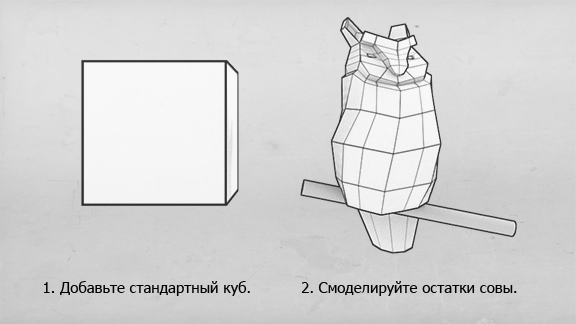
If pictures are not enough for you, welcome to Habrakat.
The article will show the most simple and frequently used tools, each (some of them) will be discussed in the process.
As you can see from the above picture, we will start with a standard cube. It is cut in half to simplify the work: the left half will automatically change according to changes in the right.
')
1. First of all, we will cut the cube polygons two more times, because, using only eight vertices, you will not do an owl.

Cutting adjacent polygons, or rather their faces, is the easiest way to compact the mesh. Do not abuse them, of course.
2. Now we select the top polygons and use the Extrude tool - this creates a copy of the selection, connected to the original. We kind of “push” up more polygons.

Then we move the vertices to get a more rounded shape close to the reference (owl).
3. Next, we cut along again and through Extrude we add the blank of the future tail.

4. Then from the top we move two vertices and again Extrude, it will be a blank of the head.
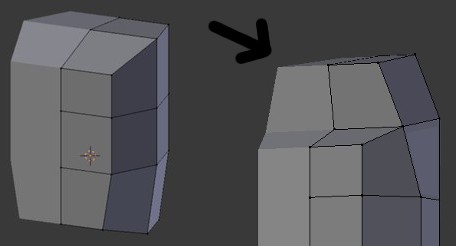
5. Now we inspect the resulting and smooth it again.
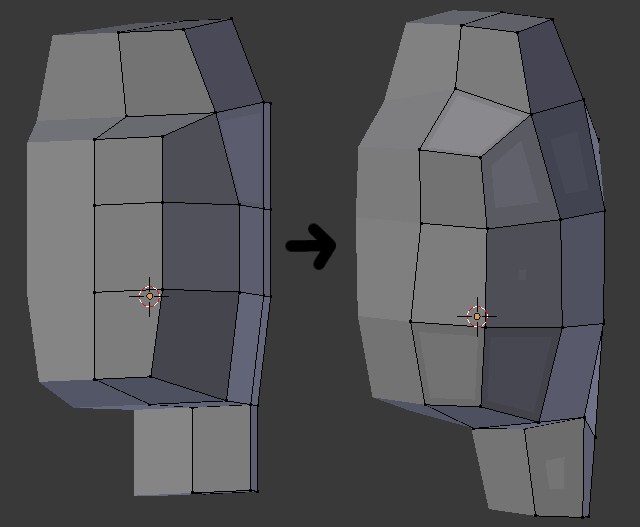
6. Cut the owl again - I apologize, the model is along, but in front, and move the vertices around the conditional neck.
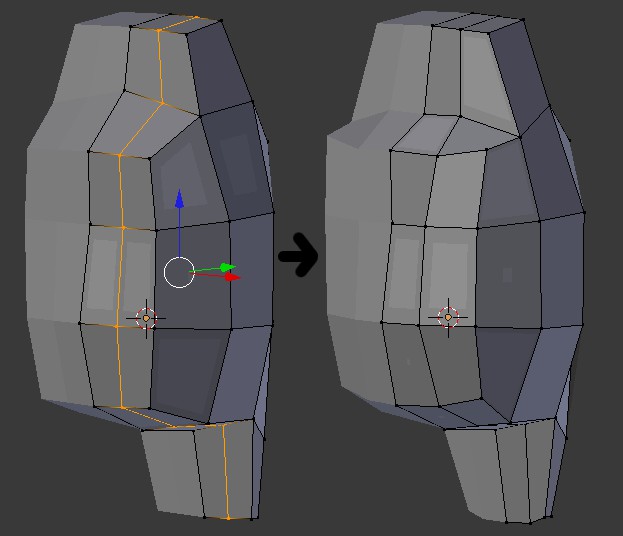
7. Cut the head from the bottom to select the neck.
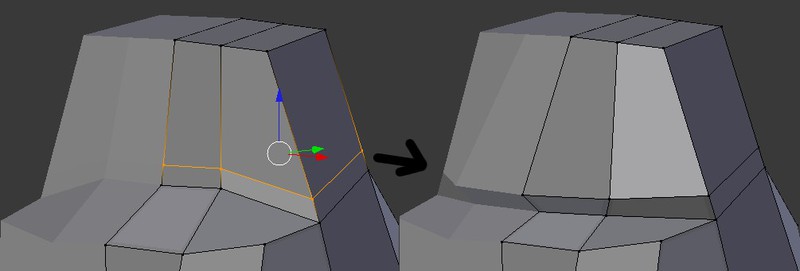
8. Now a little "cheat" to save the polygons (How is it - "why?"). We will move up two vertices to “create a platform” for Extrude, and then produce it.

9. Using the knowledge obtained in the process, we add details to the head of the owl (we cut several times, use Extrude a couple of times) and smooth out the general outlines.

That's all! Polygonal modeling is easy.
It is not necessary to even be able to draw, although it will be a significant plus.
The article is aimed at people who doubt their ability to 3d-modeling, but not at all for beginners and especially professionals.
The name of the editor used in the lesson is easy to learn.
Thanks for attention.
I will try to clarify the situation a little using a simple example.

If pictures are not enough for you, welcome to Habrakat.
The article will show the most simple and frequently used tools, each (some of them) will be discussed in the process.
As you can see from the above picture, we will start with a standard cube. It is cut in half to simplify the work: the left half will automatically change according to changes in the right.
')
1. First of all, we will cut the cube polygons two more times, because, using only eight vertices, you will not do an owl.

Cutting adjacent polygons, or rather their faces, is the easiest way to compact the mesh. Do not abuse them, of course.
2. Now we select the top polygons and use the Extrude tool - this creates a copy of the selection, connected to the original. We kind of “push” up more polygons.

Then we move the vertices to get a more rounded shape close to the reference (owl).
3. Next, we cut along again and through Extrude we add the blank of the future tail.

4. Then from the top we move two vertices and again Extrude, it will be a blank of the head.

5. Now we inspect the resulting and smooth it again.

6. Cut the owl again - I apologize, the model is along, but in front, and move the vertices around the conditional neck.

7. Cut the head from the bottom to select the neck.

8. Now a little "cheat" to save the polygons (How is it - "why?"). We will move up two vertices to “create a platform” for Extrude, and then produce it.

9. Using the knowledge obtained in the process, we add details to the head of the owl (we cut several times, use Extrude a couple of times) and smooth out the general outlines.

That's all! Polygonal modeling is easy.
It is not necessary to even be able to draw, although it will be a significant plus.
The article is aimed at people who doubt their ability to 3d-modeling, but not at all for beginners and especially professionals.
The name of the editor used in the lesson is easy to learn.
Thanks for attention.
Source: https://habr.com/ru/post/139419/
All Articles